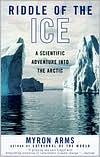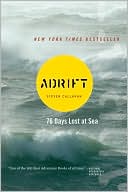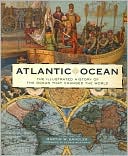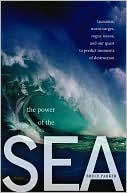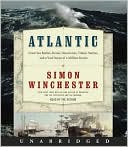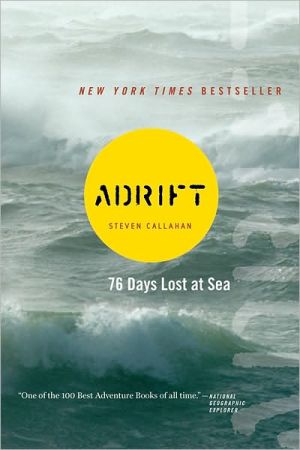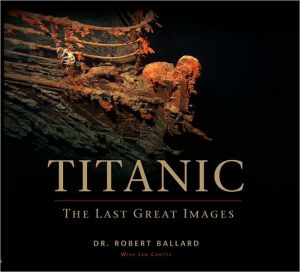Riddle of the Ice: A Scientific Adventure into the Arctic
By any account, the impenetrable barrier of sea ice that blocked the Brendan's Isle halfway up the Labrador Coast should not have been there in late July, in what was one of the hottest summers in memory a few hundred miles to the south. Frustrated and mystified at having to turn back so early in his 1991 northbound voyage, sailor Myron Arms became determined to explain the anomaly. \ Three years later, having pursued this obsession from the Woods Hole Oceanographic Institution to Columbia's...
Search in google:
By any account, the impenetrable barrier of sea ice that blocked the Brendan's Isle halfway up the Labrador Coast should not have been there in late July, in what was one of the hottest summers in memory a few hundred miles to the south. Frustrated and mystified at having to turn back so early in his 1991 northbound voyage, sailor Myron Arms became determined to explain the anomaly. Three years later, having pursued this obsession from the Woods Hole Oceanographic Institution to Columbia's Lamont-Doherty Earth Observatory to NASA's Goddard Space Flight Center, Arms took his fifty-foot sailboat and a small crew back up the coast to test his ideas—this time making it past the Arctic Circle. The days and nights at sea are an experience of both untold vastness and the closest of quarters, of calm seas one hour and pounding gales the next. And by the time the Brendan's Isle rides the great swells of Baffin Bay, north of everything but towering icebergs, the reader can be in no doubt that, together with the crew, he is holding a finger to the very pulse of our planet.Weaving together the unfolding narrative of the voyage itself with a groundbreaking synthesis of the latest theories about Arctic ice production—and the troubling signals it may now be sending us—Riddle of the Ice is a taut and suspenseful science mystery told as captain's log. This is narrative nonfiction of the highest calibre, and it is certain to become a classic in the genre. Library Journal This is the tale of a nautical and scientific adventure. In 1991, Arms attempted to sail to the Arctic in a 50' sailboat but had to turn back because of sea ice. After extensive research he was able to complete his trip in 1994. What Arms wanted to investigate was the question of whether a shift in climate was changing the sea ice or vice versa. Arms is a sailor, not a scientist, but he's done his research and effectively handles the science, derived from questions about sea ice and the environment that interested him and the scientists he consulted. Since scientists don't agree on the underlying reasons for climatic changes, the debate is fairly mild but informative. Why a sailboat? "It is inherently unstable, vulnerable to the elements, and sometimes even dangerous," but Arms wanted to tell the story "within the context of a long sailing voyage"which adds to the interest and readability of his book. There is a good bibliography for further research. Recommended for public and academic libraries.Jean E. Crampon, Hancock Biology & Oceanography Lib., Univ. of California, Los Angeles
August 14, Sunday morning. 62/05N, 56/35W\ LOG: Wind: south, eight knots. Barometer, 29.68 steady. Weather: broken overcast. Position: Davis Strait, 200 miles due east of Meta Incognita Peninsula, Baffin Island.\ For twenty-four hours after leaving Gotthabsfiord, Brendan's Isle races before strong easterly winds, skidding down the faces of following seas, vibrating and shuddering, throwing a curtain of spray from her bows, carving a line of white foam in her wake. The knot-meter ticks ten, eleven, twelve knots as she surfs downhill, surrounded by streaks of spindrift and flanked by long, breaking crests.\ We'll keep three on watch at all times tonight, I decide, and we'll rotate a radar operator and a person on the bow every half hour, adding an extra lookout forward if we get into heavy ice conditions. We'll run at speed directly for Saglek Bay--a fiord in the Tourgat Mountains with a decent anchorage near its mouth that is protected from the north. And we'll cross our fingers, rub every lucky stone, and kiss every four-leaf clover we can find--hoping we make it safely through.\ From the Hardcover edition.
\ Library JournalThis is the tale of a nautical and scientific adventure. In 1991, Arms attempted to sail to the Arctic in a 50' sailboat but had to turn back because of sea ice. After extensive research he was able to complete his trip in 1994. What Arms wanted to investigate was the question of whether a shift in climate was changing the sea ice or vice versa. Arms is a sailor, not a scientist, but he's done his research and effectively handles the science, derived from questions about sea ice and the environment that interested him and the scientists he consulted. Since scientists don't agree on the underlying reasons for climatic changes, the debate is fairly mild but informative. Why a sailboat? "It is inherently unstable, vulnerable to the elements, and sometimes even dangerous," but Arms wanted to tell the story "within the context of a long sailing voyage"which adds to the interest and readability of his book. There is a good bibliography for further research. Recommended for public and academic libraries.Jean E. Crampon, Hancock Biology & Oceanography Lib., Univ. of California, Los Angeles\ \ \ \ \ Kirkus ReviewsA tale of science and discovery on the high, frozen seas. In the summer of 1991, Arms (coauthor, Touching the World,1975), a writer and sailor, set out on an ocean voyage to explore the Tourngat region of northern Labrador. His passage was unexpectedly blocked by a huge wall of sea ice "that should not have been there," especially in high summer, and especially in the summer of 1991, one of the warmest years in recent record. His awe and perplexity over this untoward occurrence led him to return to the area three years later to seek the reasons why these North Atlantic ocean passages should be clogged with ice out of season and closed to shipping. In the course of his lively narrative, he never provides a single answer, apart from "the randomness of nature." Instead, he offers a wonderfully rich account of the mechanics of ocean currents and world weather systems, of the migrations of pilot whales and the minds of sailors far from shore. Arms introduces his readers to such notions as the Great Conveyor Belt theory of oceanic water flow, explains why the Atlantic is saltier and warmer than the Pacific, ponders such climatological anomalies as the "halocline catastrophe," and, closest to his quest, considers the latest scientific reasoning on global warmingthe evidence for which phenomenon now appears to be incontrovertible. His science reporting is sound, his eye for meaningful detail sharp. His narrative suffers a bit from long passages of dialogue that go nowhere, but in the end this is a fine study of how complex systems workand how much closure-seeking science is unable to account for. Fans of popular-science writing and Arctic buffs alike will learn much from Arms's adventure.(Author tour)\ \
